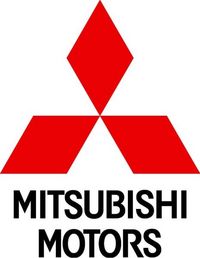Mitsubishi's i MiEV Electric Vehicle Hits the Road
 |
SEE ALSO: EV-Motoring - Electric Vehicle News Specs and Reviews
TONSLEY PARK, AUSTRALIA, March 24, 2009: Following a successful debut at the Melbourne International Motor Show, Mitsubishi’s first production-ready electric vehicle - the i MiEV – has now commenced a nation-wide feasibility test.
The i MiEV, which stands for Mitsubishi innovative Electric Vehicle, is set to become one of the world’s first truly viable zero drive-time emission city commuters in volume production when it is released in Japan later this year.
The Mitsubishi i MiEV Motorcade is covering special events, public demonstrations, specialist briefings and individual drive experiences for key government officials, fleet managers, environmental opinion leaders, the media and select members of the general public.
The i MiEV awareness program commences in Adelaide on March 24th and 25th. The Motorcade will then travel to Sydney (March 30th, 31st and April 1st), Canberra (April 3rd) and Melbourne (April 6th to 8th) before returning to MMAL’s head office in Adelaide.
Mitsubishi Motors Australia Limited (MMAL)’s president and chief executive officer, Robert McEniry, expects the i MiEV will continue to receive heightened levels of interest from members of the government, media and public.
“This is the first time a production-ready electric vehicle has ever been accredited to tour Australian roads in this way. Even in the early stages of the cavalcade, we are attracting a very broad audience, which just goes to show the great variety of customers the i MiEV is likely to appeal to,” commented McEniry.
“Hybrid and alternative fuel vehicles are becoming increasingly common in this current environmentally conscious climate, but Australia hasn’t seen anything like the i MiEV before,” said McEniry.
International interest in the vehicle has been considerable. Currently, the i MiEV is undergoing feasibility studies in several countries around the world, including the United States, Europe, the United Kingdom, New Zealand, Iceland, Canada, and as recently announced, now in Australia.
Utilising a large-capacity lithium-ion battery system and a compact, high-output electric motor in place of a traditional gasoline power train (based on Japanese and European trial figures) the i MiEV has some impressive technical specifications for a zero drive-time emissions vehicle.
Producing a remarkable 47 kW of power and 180 Nm of instant torque, the i MiEV’s permanent magnet synchronous engine is supported by a revolutionary lithium-ion battery from the newly formed joint venture company Lithium Energy Japan.
The i MiEV’s electric motor is smaller, produces more torque at low revolutions and is quieter than a turbocharged gasoline engine. Most importantly, the i MiEV’s engine is cleaner, producing zero drive-time CO2 emissions.
With total voltage measuring 330V, and total energy output at 16kWh, the compact battery and motor reside under the seating and in the back of the vehicle, allowing seating capacity for four individuals and good size luggage compartment in the rear of the vehicle. In a small car, this maximisation of space is made possible by the i MiEV’s smart design and long wheelbase of 2550mm.
Requiring seven hours from a normal domestic household power supply for a full battery charge, the i MiEV should ideally be left to recharge overnight, making it perfect for daily commuting over common distances in a city landscape.
Able to reach a top speed of 130 km/h, with a range of around 160 kilometres* from a single charge, the i MiEV is a rear-wheel drive vehicle with three ‘speeds’: Drive, Eco and Brake.
Drive is the full power mode where the car drives under normal mode. Economic or ‘Eco’ mode allows the power to drop out automatically to extend the i MiEV’s cruising range and fuel efficiency. Brake mode offers high regenerative braking that absorbs as much kinetic energy as possible – restoring power to the battery - and is perfect for downhill driving.
Compared to a similar sized petrol car, the running costs per kilometre are around 33% lower. If charged during off-peak or night time hours the operating costs will be even less.
Following this extensive cavalcade, later in 2009, Mitsubishi plans to build on the initial exposure program with a diverse range of longer-term trials of the i MiEV in government and private fleets across the nation.
Through this i MiEV program, MMAL will receive feedback from key stakeholders regarding the viability of this cutting-edge technology and, in doing so, lay the foundations for the possible sale of the vehicle in the Australian market.
MMAL Vice President of Brand and Marketing, Paul Unerkov, is anticipating this next exciting step for the i MiEV.
“It’s great to finally see the i MiEV on the road. Mitsubishi is excited to be at the forefront of this cutting-edge technology,” he said.
“Electric cars are no longer just a futuristic dream – they’re right here, right now.”


